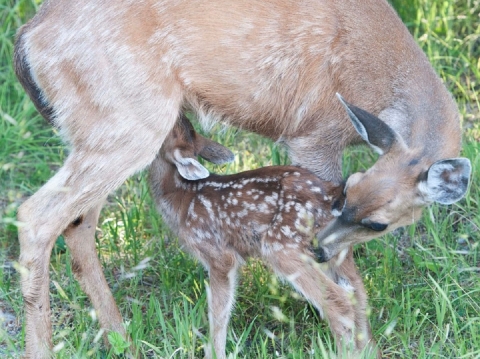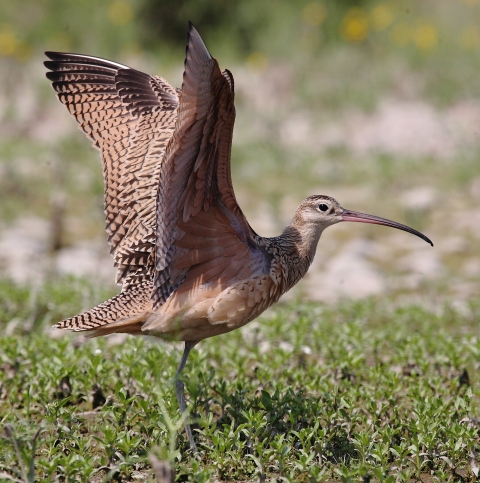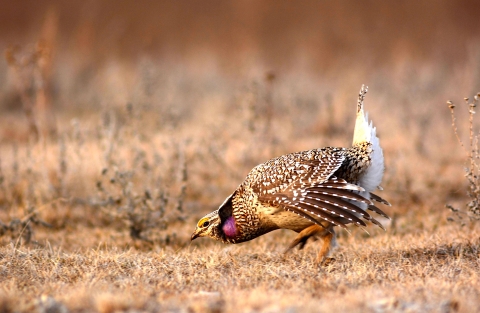Seasons of Wildlife
Spring
Spring is a time of renewal and regeneration. In April and May, male sharp-tailed grouse and greater prairie chickens display on courting areas known as leks. Males attract females with their dancing, colorful displays, and various noises. White-tailed and mule deer females deliver spotted fawns in the tall grasses and tree covered areas. Migratory birds, such as ducks and many smaller birds, arrive in their brightest plumage of the year.
Summer
Summer is typically a time of growth. Young prairie chickens and grouse hatch from their eggs with a big appetite for insects and plants. The fawn deer grow fast as they nurse from the doe and begin to eat plants. Male deer grow new antlers which are covered with what looks like brown velvet. Males will rub the velvet off during late summer. The bright colors on many of the birds fade as they complete their breeding and begin to raise young. Warm season grasses begin to grow during the warmer months and will produce seed by the end of summer.
Fall
Fall is a time for many plants and animals to get ready for winter. Young prairie chickens and sharp-tailed grouse finish growing feathers that will keep them warm and flying through the winter. Male deer will use polished antlers to fight for females to breed in November. The deer will all eat plenty to build a fat supply which will be crucial to surviving the cold winter. The migratory birds fly south to warmer climates with more dependable food supplies. Many cool season grasses will start to grow again and put energy into their roots, giving them a good start again next spring. Grass and wildflower seeds are moved about by animals, wind, and water.
Winter
In winter the days are shorter and the nights are longer. The weather turns cold and snow often blankets the ground. The prairie chickens and grouse spend their time searching out food, quite often eating poison ivy or cedar berries. Deer fawns born stay with their mother through the winter. The male deer lose the antlers that grew so quickly last summer. Geese arrive from areas to the north and winter on the Niobrara River. The grasses are mostly dormant, but some species will take advantage of occasional warm days to take in some sunlight and grow just a bit.
Featured Species
Fort Niobrara Refuge is home to numerous species! Sharp-tailed grouse are a native to the Refuge and thrive in the Sandhills.
The American bison, also commonly known as the American buffalo, is a North American species of bison that once roamed the grasslands of North America in massive herds. A bison has a shaggy, long, dark brown winter coat, and a lighter weight, lighter brown summer coat. The male bison are slightly larger than the female and, in some cases, can be considerably heavier. Adult male bison stand around six feet tall at the shoulder and weigh up to approximately 2000 pounds. Bison heads and forequarters are massive, and both sexes have short, curved horns that can grow up to two feet long. Bison use their horns when fighting for status within the herd and for defense. Fort Niobrara NWR is home to a herd of approximately 350 bison.
The greater prairie chicken is another non-migratory, native grassland bird. This North American species was once abundant but has become extremely rare over much of its range due to habitat loss. While traveling through the Sandhills, listen for the the low whistling “booming” song of the male prairie chicken during mating season in April.




